
Copper:
The Continuous
Cycle
Welcome to #ContinuousCopper
Copper's unique ability to be used, recovered, and reused - without compromising performance - makes it integral to modern life. As global demand grows for clean energy, digital infrastructure, and electrified mobility, copper remains central to progress: reliable, recoverable, and ready for what's next.
Copper is more than just critical.
It's Continuous.
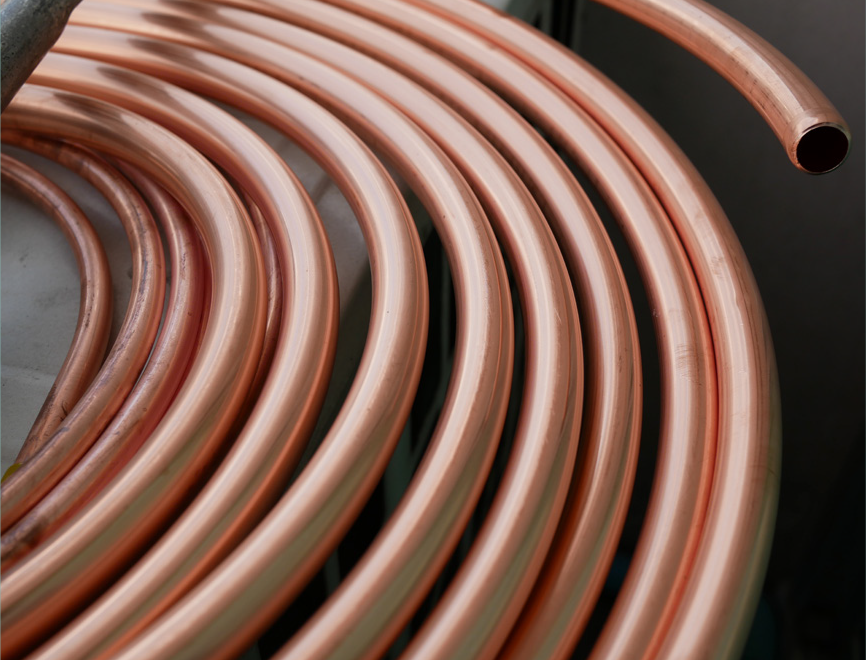
Our previous #CopperIsCritical Campaign made the case for including copper on the 2025 USGS Critical Minerals List, highlighting that while demand is rising, the U.S. has the copper resources to meet it - if we act strategically.
That strategy includes:
- Increased domestic production and refining
- Expanding recovery and recycling infrastructure
- Maintaining strong trade relationships with trusted international partners
Now, #ContinuousCopper takes the next step - shifting the conversation from availability to circularity.
This campaign focuses on how copper's proven recyclability and long product life help build a more sustainable and secure material system - supporting climate goals, clean industry, and long-term supply security.
The Power of the Continuous Cycle
Copper never wears out.
Its intrinsic properties, like high electrical and thermal conductivity, formability, and corrosion resistance, enable improved sustainable performance at every stage of the supply chain, across multiple lifetimes of use.
Copper's cycle

Start
Use


End
Again

At every stage of this cycle, copper plays a pivotal role in enabling:
- Clean energy systems
- Electrified transportation and EV infrastructure
- Resilient, high-performance data centers
- Durable, reliable components for industrial and consumer technologies
With responsible production, performance enhancing fabrication, thoughtful product design, and advanced recovery methods, copper meets tomorrow's needs without exhausting today's resources.
What the Campaign Covers
#ContinuousCopper will follow copper's continuous full life cycle across four key phases.
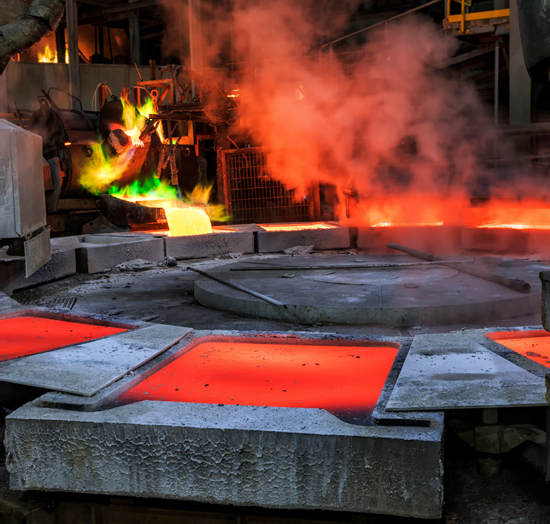
Start
How copper is responsibly produced and processed, including mining, semi-fabrication, secondary production, and data transparency
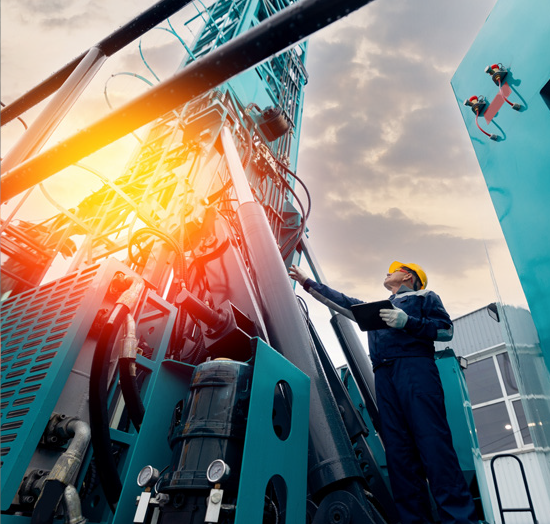
Use
Real-world applications that improve quality of life and enable sustainable development

End
End Recovery through end-of-life collection and sorting that enable responsible reuse
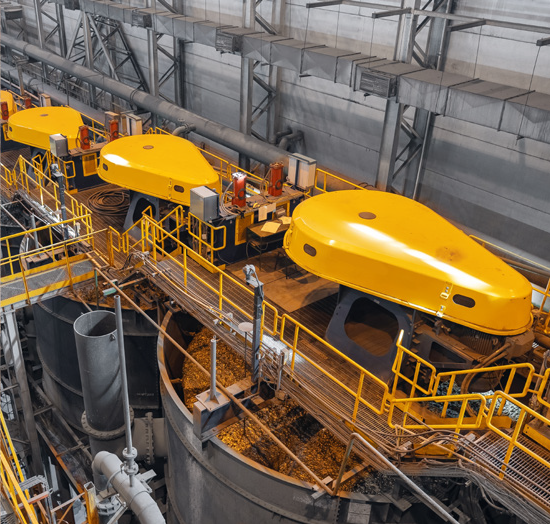
Again
Investment in secondary production that returns copper to use and supply chain transparency that builds trust
Why It Matters

Copper is essential - not only because of its intrinsic properties, but because of what it makes possible. By choosing copper we support:
- Long-lasting, high-performance applications
- Recovery systems that minimize waste and extend material value
- Supply chain transparency rooted in shared sustainability standards
- A circular, low-carbon economy that benefits people and our planet
Copper is a material we can count on today – and a solution we’ll need tomorrow.
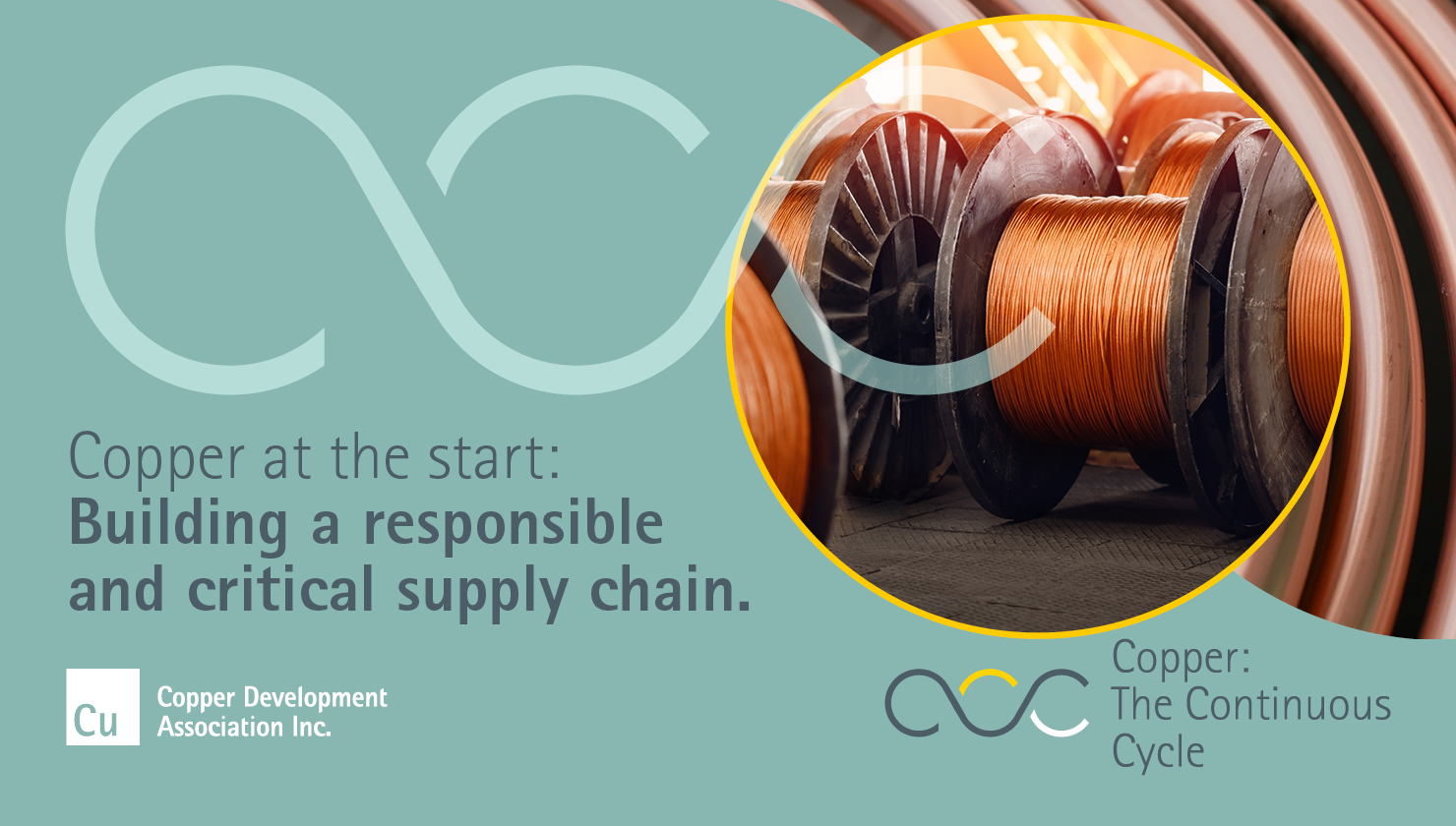
Copper at the start: Building a responsible and critical supply chain.
Part of the CDA #ContinuousCopper Campaign – September 2025 – authored by Erin Smith (Deputy Director, EHS and Recycling)
Copper is critical, and the world needs more of it. The real question is not only how much copper we can produce, but how responsibly we can do it. Trust in copper's sustainability story starts at the source. It begins in mines, smelters, secondary refining, and fabrication facilities where choices about energy, emissions, and transparency set the tone for the entire value chain.
Guided by the International Copper Association (ICA) and the Copper Development Association (CDA), the industry is aligning around clear standards and measurable progress. ICA and CDA members are leaders in this space, setting benchmarks that distinguish them and move the market toward transparent, lower-carbon production.
Responsibility begins at the source
Copper's continuous cycle, Start → Use → End → Again, means every phase matters. But the Start phase is where responsibility is established. It is where copper's sustainability story begins, long before it powers a motor, reinforces a grid, cools a server, or delivers clean water.
Across the value chain, producers are reducing environmental impacts, strengthening efficiency, and making operations more transparent. Primary producers are investing in low-carbon energy, advanced automation, and water stewardship. Secondary producers are scaling advanced scrap recovery that keeps copper in circulation and lowers products' carbon intensity.
Fabricators are embedding sustainability into operations as well. Representative examples across CDA's membership include energy upgrades that cut Scope 1 and 2 emissions, on-site solar and renewable power agreements, high recycled-content targets in fabricated products, and ISO 50001 energy management systems that lock in performance. These are just a few examples of leadership across CDA's membership.
This work is urgent and strategic. In August 2025, the U.S. Geological Survey issued its draft 2025 List of Critical Minerals, proposing to include copper among 54 essential commodities at risk of disruption. While not yet final, this marks a turning point in U.S. mineral strategy and underscores the stakes for responsible, reliable supply. It gives the copper value chain the opportunity to be a leader and drive change throughout the industry.
Recognition must catch up to reality
Producers are making measurable progress, but current frameworks do not fully reflect or reward these efforts.
- Policy and trade frameworks remain out of sync with industry advancements. Incentives for downstream clean technologies are growing, but upstream investment in mining, refining, and recycling faces persistent barriers. Permitting processes remain fragmented, and tax incentives for domestic production are not proportional to bolstering U.S. supply.
- Sustainability efforts are disconnected. Producers increasingly disclose carbon intensity, recycled content, and responsible sourcing practices through initiatives, such as ICA's global LCI and LCA providing carbon intensity, recycled content, and responsible sourcing practices, but inconsistent definitions make comparisons difficult.
- The result is slower momentum. These gaps weaken market signals, discourage capital investment, and undercut the progress producers are making across the value chain.
Alignment secures the future
Closing these gaps requires alignment around language, metrics, and transparency.
- For buyers, regulators, and investors: copper must provide clear, standardized disclosures on carbon performance, recycled content and ESG risks.
- For producers: there must be confidence that investments in circularity, emissions reduction, and operational transparency will be rewarded with market access and policy benefits.
- For society: transparency ensures that copper's growth aligns with sustainability commitments, supporting progress while protecting resources.
Leadership means setting the terms rather than reacting to them. Initiatives such as critical mineral incentives and updated energy mandates are being designed now. If the copper value chain acts early to align standards and reporting, they will secure a competitive advantage, strengthen trust, and reinforce copper's indispensable role in a low carbon economy.
The path forward
Copper's unique durability, conductivity, and recyclability make it essential for sustainable technologies, but its benefits depend on secure, responsible production and policy support. The Start Phase focuses on laying this foundation through responsible practices, transparent metrics, and modernized policy. With copper's proposed designation as a critical mineral, the challenge is turning recognition into action, which can ensure resilient supply chains, global sustainability, and lasting community benefits.
Explore. Learn. Join the Movement.
This campaign is your guide to copper's continuous role in a sustainable future. Whether you're a policymaker, manufacturer, engineer, or advocate - #ContinuousCopper is for you.
- Watch short videos on copper’s journey and recovery
- Hear from CDA members on what sustainability means in practice
- Read insightful thought leadership articles on copper in infrastructure, energy and industry
- Join the conversation on social: #ContinuousCopper
Together, Let’s Keep Copper Moving

